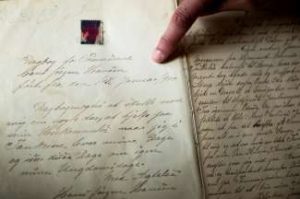The Memphis-born painter and sculptor Derek Fordjour is an art star. Jay-Z and Beyoncé collect his work. He’s had recent shows in London and St. Louis, and there’s one in Shanghai on the horizon.
An exhibition that opened Nov. 12 at his New York gallery, Petzel, drew a thoughtful profile by The New York Times. (It includes a puppet show.) The Financial Times wrote that Fordjour’s painting “Pall Bearers,” about George Floyd’s funeral, will describe for future decades “how 2020 felt.”
His reach may be global, but the artist keeps ties to his hometown close. He still calls his art teacher from Central High School on Father’s Day. And this fall he set an auction record for his work with a gift to St. Jude Children’s Research Hospital, a place he remembers fondly from his childhood in Memphis.
The New York-based private art dealer Andre Viana paid $410,000 for Fordjour’s “Rhythm & Blues, 2020,” which was good news for the artist and the hospital.
Fordjour, 46, said by phone this week that he tries not to think much about the prices his work commands, since it’s something he can’t control. But, “This is a record I can celebrate,” he said, since “100 percent of those dollars go to saving lives at St. Jude.”
Fordjour’s parents arrived in Memphis in the late 1960s from Ghana. His father is an oral surgeon who used to practice at the old St. Joseph Hospital, located on land now occupied by St. Jude. Fordjour was born in 1974, and he and his younger brother sometimes took the tunnel that connected the two institutions to explore the children’s hospital.
“We would wander the campus,” he said. “It was brighter and had lots of art.” Like most kids, he says, he started making art at 3 years old, but unlike most kids, he never stopped, and, “The halls of St. Jude were an opportunity to see people living with art, to see murals.”
Fordjour’s family went to Longview Heights Seventh-day Adventist Church and he spent his first eight years in school at the Alcy SDA Junior Academy. Both the church and school supplied an “insular, supportive, welcoming, loving community, and nurtured the artist in me,” he says.
At Central, he studied with the revered art teacher Bill Hicks, whose former students often cite him as their essential influence.
Hicks, now retired, remembers Fordjour, simply, as “brilliant.” The teacher had a self-portrait Fordjour did in high school framed in his living room when a nationally known artist visited, saw the work, and predicted: “He’s going to be famous.” Another of his former students texted him from Fordjour’s New York opening last week. Hicks said he texted back about Fordjour: “My main thought is, ‘You did it.’”
Fordjour has a documentary project planned about Hicks. “So many people in my constellation now went through that (Central High art) program; he built community amongst us.” He also is designing a summer fellowship for Memphis art students, which he hopes will debut in 2022, because Hicks inspired “a lot of my passion for working with young people at that age.”
Fordjour went on to Morehouse College in Atlanta, then Harvard for his master’s degree in art education and Hunter College for an MFA in painting.
In 2018, the Whitney Museum of American Art commissioned Fordjour’s massive mural about gun violence, called “Half-Mast.” Last year, Jay-Z and Beyoncé bought his portrait series called “Top-Ten ALLSTARS.” This year Fordjour had his first solo museum show at Contemporary Art Museum St. Louis.
Even a lawsuit filed by his former gallery, that made news in the New York art world, seems to be a report on his success — the gallery owner claims that the artist, at the time an unknown student, promised him 20 paintings for $20,000 and hasn’t supplied the full number yet. Fordjour’s lawyer has asked the court to dismiss the suit as “meritless.”
Fordjour’s subjects are often in uniform, sometimes for sports or bands, and the painting auctioned for St. Jude shows two young men in marching-band dress, one carrying a cymbal, one a horn. The artist said the horn and cymbal are a nod to Memphis music, W.C. Handy and Beale Street.
But the painting is about playing, and about him and his younger brother, Rick, now a dentist in Washington, D.C.
“I made that work very much about my brother and I venturing into St. Jude. I wanted to make a piece that was optimistic, about play, marching, progression, the tradition of parades in Memphis that I remember as a child. It’s about the idea of play, period.”
“Derek’s extraordinary contribution is made all the more special because of his lifelong connection to St. Jude,” said Richard C. Shadyac Jr., president and CEO of ALSAC, St. Jude’s fundraising and awareness organization. “Growing up in Memphis, he understood and appreciated how St. Jude used art to instill hope and inspire patients. It’s so gratifying to see him use his remarkable talents to help his hometown cause.”




